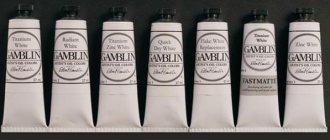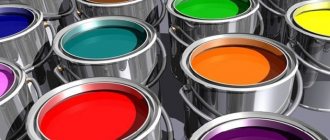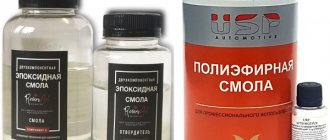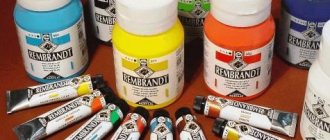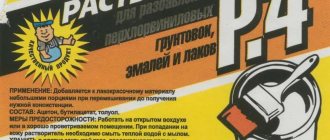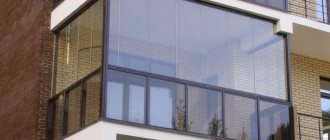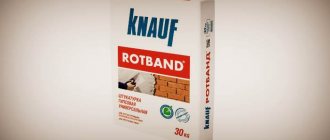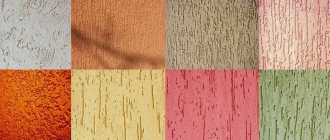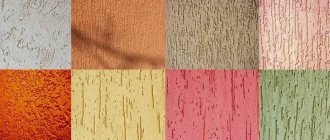Those who have been involved in repair work are familiar with terms such as plaster and putty. These are the most popular building materials, without which repair work cannot be done. They allow you to level the surface, hide defects and prepare the walls for further work. However, they are often confused and people think that these materials are interchangeable and very similar to each other.
Is this really true? Not really. They have their own characteristics, scope of application and other features. What is the difference between putty and plaster, and where should which material be used?
Features of materials
Before the finished mortar is laid on the wall, it is first brought to the desired consistency. To do this, dry mixtures are diluted with water and mixed well. But while the future solution has the form of a fine powder, it is difficult to determine which type of material is in front of you.
Meanwhile, the difference between putty and plaster is significant. As a rule, they immediately talk about the purpose of the building mixture. But it is also important to pay attention to the composition. And it is he who plays the most important role. Experienced craftsmen will immediately distinguish lime from chalk, and cement from barite. But a beginner can most likely make a mistake.
Plaster
This material comes from Italy. Like most decorative coatings. And usually plaster acts as the final finishing layer. And if you translate the word from Italian, you can see many answers at the very root. The concept of stucco covered three types of raw materials at once - alabaster, gypsum and lime. They were the basis of the first finishing layers of decorative coatings.
Wall covered with Venetian plaster Source vse-otoplenie.ru
Let's look at how plaster differs from putty in terms of the composition of ready-made dry mixtures. The materials mentioned above have survived to this day. And they are successfully used for interior work. Since the strength of the coating does not allow it to resist well various external aggressive manifestations of nature.
Lime mortars are valued for their maximum environmental friendliness. It is very easy to work with this material. Therefore, the entire plastering process proceeds quickly and without interference. And it’s easy to prepare. It is enough to add 4 parts of river sand to one part of lime. And dilute with water.
Gypsum mixtures are also highly environmentally friendly. But only from reliable manufacturers. In pursuit of profit, some companies add extremely harmful asbestos to the composition to make the surface white. The fact is that the color of the coating will directly depend on the quarry where the raw materials were mined. And a white wall can have pink, blue, yellow and even gray tints.
Working with gypsum plaster Source kwitka.com.ua
Craftsmen love to work with plaster. The solution adheres very well to the concrete wall. And the finished surface is perfectly smooth. In addition, you can immediately apply a fairly thick layer in one pass. This does not require any reinforcement.
Before the advent of cement, the strength of plaster left much to be desired. And today, the best mixtures for external work are mixtures based on Portland cement and Portland slag cement. In addition, cement began to be added to both gypsum and lime mortars. This is done if the surface will be exposed to high humidity.
All mixtures can be divided into 3 classes. Ordinary plaster, in principle, does the rough work. Levels the surface and prepares it for a thin layer of decorative coating. At the same time, it protects the wall from the negative effects of the environment.
Special mixtures create heat and sound insulation. Perform fire protection functions. And they even serve as a shield for radioactive radiation. Decorative plaster works as the final layer. It emphasizes the aesthetic expressiveness of the surface.
Terrazite plaster on the facade Source ob-otdelke.ru
See also: Catalog of companies that specialize in finishing materials and related work
Putty
Now let’s look at the difference between putty and plaster. Its main purpose is to level the surface to perfect condition. And this prepares it for subsequent finishing. For example, for wallpapering. But most often paint is applied to a completely flat surface.
To make putty, drying oil is most often mixed with either gypsum or chalk. Laundry soap and glue are widely used additives. Moreover, the latter may have a different basis. Carpentry is used most of all. But you can use both flour and animal products. Various varnishes are also added.
In addition to chalk, putty can also be made from other film-forming substances. For example, from talc or barite. And the most common pigments for coloring the composition are zinc white and ocher.
Universal acrylic putty Source vbud.in.ua
Sequence of work
After getting acquainted with the main characteristics and differences of mixtures, it becomes clear that they are used in different cases. But often they are laid alternately. Let's look at what comes first: plaster or putty.
- For surfaces with cracks, potholes, differences of 50 mm or more, the sequence of actions will be as follows: cleaning, priming, single or multi-layer plastering, priming and puttying.
- For bases with the correct plane and minor defects, a different work algorithm is used: cleaning, applying primer, laying a starting putty solution, priming, applying the finishing composition.
- If the surface is smooth, without noticeable defects, it must be puttied with finishing paste. This is quite enough to give the desired smoothness.
Despite the significant differences between the two materials, working with them will require certain skills. If you plan to apply the mixtures yourself, it is best to first practice on inconspicuous fragments,
This should be done in good lighting, and when considering the result, it is worth changing the direction of the light flux. This is how previously invisible flaws become visible.
Source
Types of materials
Plaster and putty are so popular among builders that they began to divide each one according to its purpose. From here came many types of solutions that are used to achieve certain goals.
Types of decorative plaster mixtures:
- Colored - ideal for interior decoration.
- Stone - creates an imitation of natural stone.
- Venetian - resembles marble.
- Sgraffito - consists of two or more layers and is similar to painting.
- Terrasite - a multi-component composition creates a beautiful rough surface.
- Silk - the so-called liquid wallpaper.
In addition to the most common lime, gypsum and cement-sand mortars, you can also find special mixtures. For example, magnesium plaster is intended for interior work, when it is necessary to ensure high non-combustibility of the object.
Putty and plaster - definition of the differences
To begin with, it should be noted that plaster is a unique solution for construction , with which you can carry out the process of leveling internal as well as external walls and ceilings.
Putty will be an ideal option for leveling surfaces only when the amount of work is small enough. In other words, with the help of putty you can confidently smooth out small defects - cracks, seams, etc.
From a practical point of view, we note the following points:
Video description
The video will show what kind of putty or plaster there is and what is the difference between them:
Types of putty mixtures:
- Oil – used to protect the surface from excessive moisture. Consists of drying oil, driers and chalk.
- Adhesive – characterized by increased adhesion. It contains the same drying oil and chalk. Glue is also added.
- Oil-adhesive – prepares the surface for painting or wallpapering.
- Gypsum is considered the most environmentally friendly.
- Epoxy – perfectly protects against most chemical aggressions.
- Polyester – used for restoration of metal after corrosion damage.
- Latex - for sealing drywall seams.
- Putty – levels plastered surfaces.
- Acrylic universal - suitable for literally any surface. Often used to repair plaster.
- Acrylic façade – resistant to moisture and ultraviolet radiation. Good abrasion resistance.
- Based on PVA - for sealing cracks and joints.
Plaster or putty reliably protects the surface from moisture and perfectly eliminates various defects. Only the thickness of the overlay is different. The minimum layer of plaster is 10 mm. And the maximum thickness of the putty is only 1 mm.
Distribution of putty over the surface Source mirbetona.info
What should plaster walls look like before applying putty?
As already explained, plaster mortar is used to level bases with large differences in height and serious defects. Taking into account the thickness of the putty layer - 2 mm, the surface of the plaster coating intended for puttying is leveled by covering and rubbing the surface. If necessary, the surface of the plaster is sanded (a difficult task due to the strength of the material).
Before performing puttying, you need to make sure: the surface must be dry and clean (no stains). Be sure to prime the surface before puttingty. Priming clogs pores and increases adhesive properties.
As a result, after puttying, the surface ready for painting should look even, uniform (without stains), smooth and dry.
Difference in application methods
There is another difference between putty and plaster. It lies in the method of application to the surface. And plaster is the leader in complexity here. Because before the final stroke you need to go through many stages and use various tools.
The sequence of plastering works with cement-sand compositions:
- Beacons are attached to the primed surface.
- If a very thick layer is to be applied, it is necessary to install a reinforcing mesh.
- The solution is spread onto the wall with a trowel.
- Aligned by the beacon rule.
- The final grouting is carried out with a trowel.
Gypsum mixtures are spread on the wall with a large spatula. There is also a machine method of throwing mortar onto the wall. It makes the work much easier and faster. The construction mixture is supplied under high pressure through the hose and this increases adhesion.
Plastering work on lighthouses Source files.ub.ua
Unlike complex plaster, puttying requires only one large flexible spatula. The paste, in a small amount, is applied to the instrument and distributed evenly in a thin layer over the surface. And if significant curvature needs to be leveled, the process is repeated until perfect evenness is achieved. You just need to take breaks to let the layers dry.
You literally have to plaster or putty the walls before any finishing. And often these operations occur immediately one after another. Therefore, you should know when to apply putty to plaster. And in the answer lies the final difference between these two building mixtures.
Since various hardeners are often added to the putty, it becomes ready in just a couple of hours. After this you can already glue the wallpaper. But the plaster may take more than two days to dry. Because the thickness of its layer is much greater.
Application area
An important difference between plaster and putty lies in the scope of their use. The plaster material is selected to correct significant curvature of surfaces and their deviations from the plane. It is possible to correct differences of about 50 mm. In order for the work to be completed efficiently, the basic requirements must be met.
- If it is necessary to correct a significant difference, several layers of the mixture are applied. Each of them should not be higher than 7 mm.
- For layers with a height of more than 30 mm, reinforcement is required, otherwise peeling is inevitable.
- If there are differences of more than 50 mm, perhaps the best option would be to level with plasterboard or install a suspended ceiling.
Putty is used to obtain a perfectly smooth surface. The maximum differences in height that can be leveled with its help are 15 mm. Thicker layers are prone to shrinkage and delamination.
Briefly about the main thing
Putty and plaster are not different names for the same operation. Each material has its own special purpose. Plaster globally levels the walls and mainly acts as a decorative coating. Additionally creates a durable insulating layer.
The putty eliminates minor defects and levels the surface to perfection. Its main purpose is to prepare the wall for wallpapering or painting. Additionally, the mixture protects the surface from excessive moisture. In addition, the materials differ in the method of application to the wall, as well as the time spent on drying.
Ratings 0

